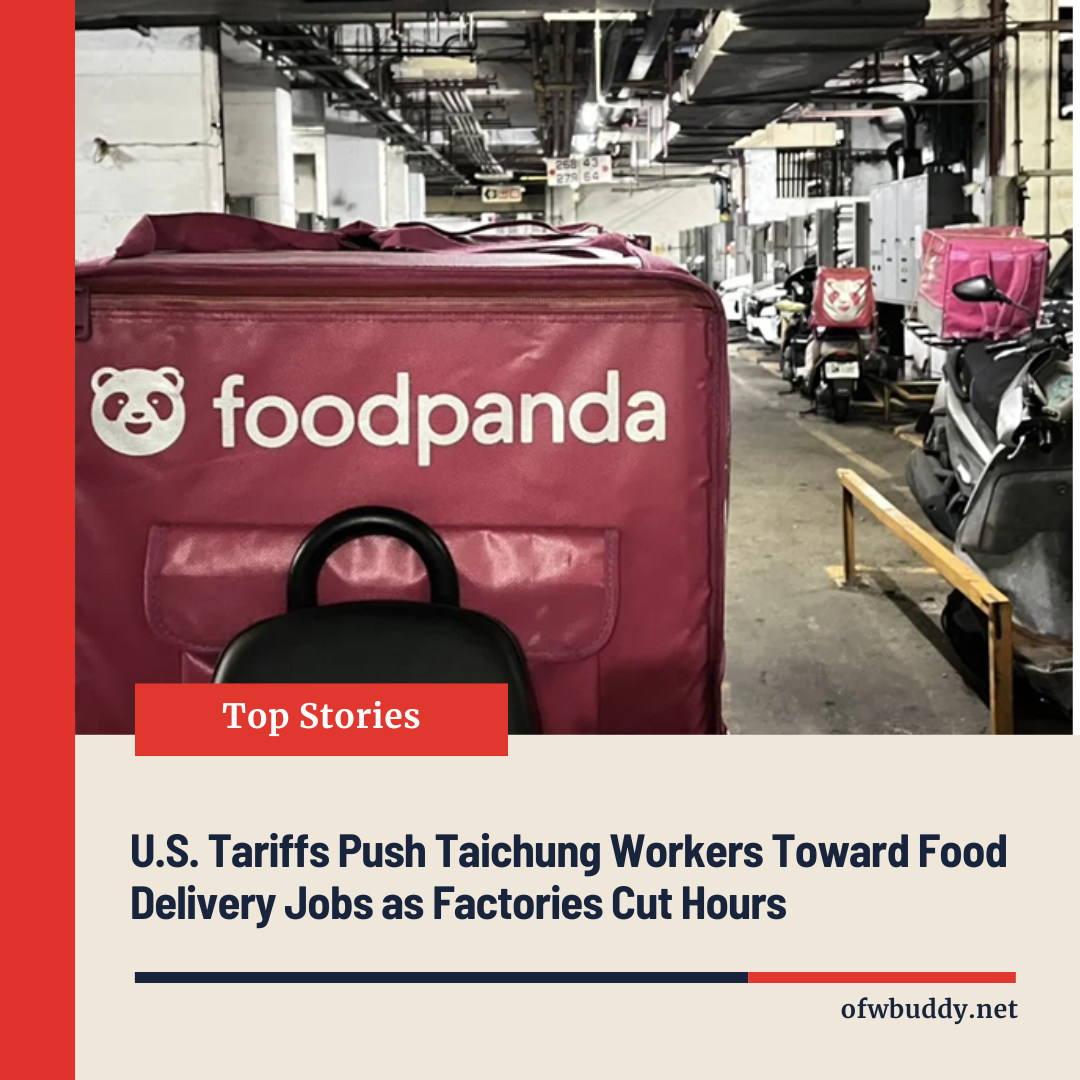TAICHUNG, October 6, 2025 — The ripple effects of U.S. reciprocal tariffs continue to be felt across Taiwan’s manufacturing sector, with Taichung bearing the brunt of the slowdown. As production weakens and factories scale back operations, a growing number of workers have turned to food delivery platforms to earn extra income during periods of unpaid leave.
A leading food delivery platform recently confirmed a noticeable surge in new delivery drivers originating from the manufacturing sector in Taichung. The influx has become so significant that both experienced couriers and union officials have reported encountering many unfamiliar faces on the job—often equipped with brand-new delivery bags.
According to Tu Guoliang, secretary-general of the Taichung City Delivery Workers’ Union, the increase in part-time delivery workers is closely tied to recent industrial disruptions. “Many factory employees have seen their working hours reduced due to tariff impacts. They are now using delivery work to make ends meet,” Tu explained.
He added that he routinely advises new delivery workers to secure labor insurance, which can be arranged online for a modest premium. “This ensures they’re protected in case of accidents while delivering,” he said. Tu recalled a conversation with a friend who had started delivering food on the side after his factory job became unstable. “He told me he drives for a day or two each week to supplement his income,” Tu said.
Xiao, a delivery driver with seven years of experience, confirmed that many new workers have joined the delivery ranks in recent months. “I’ve noticed a lot of new delivery bags on the streets—it’s a clear sign of more newcomers,” he said. Xiao explained that anyone can easily buy a delivery kit online and begin working immediately. However, unlike full-time couriers who often join labor unions, many newcomers are temporary workers who rarely participate in union activities. “They usually just deliver a few orders to get by,” he added.
A Taichung City Government official also observed the shift firsthand. During a visit to a major industrial site, he noticed numerous delivery vehicles parked outside. “The company’s chairman explained that because of unstable orders, employees are allowed flexible hours and can take delivery work when production slows,” the official said.
Recent data from Foodpanda provides further insight into this trend. In Taichung, the restaurant industry accounts for the largest share of part-time delivery drivers at 20%, followed by the service industry at 17%, and manufacturing and construction at 16%. Only 12% of drivers are full-time, while 88% work part-time. Moreover, half of all drivers spend less than 10 hours online per week.
Taichung’s machine tool and machinery sectors have been among the hardest hit by the tariffs, with many factories adopting a four-day work week or even longer periods of downtime. Delivery platform representatives acknowledge that more manufacturing workers have joined the gig economy, though comprehensive data is still being gathered.
As the U.S.-China trade tensions persist, Taichung’s experience underscores how global economic policies can reshape local labor markets—pushing traditional factory workers into the growing world of gig-based employment.

